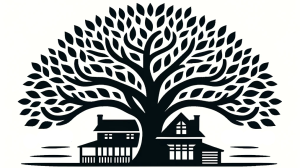As an arborist, I have seen firsthand the importance of pruning trees properly. While pruning is often viewed as a simple task, there is actually a lot of art and science involved in getting it right. In this article, I will discuss the principles of Dr. Ed Gilman, a renowned arborist and professor at the University of Florida, who is widely regarded as an authority on the art of pruning.
Dr. Gilman believes that pruning is both an art and a science, and that a good pruner must have a deep understanding of tree biology, as well as the skills and techniques needed to shape and maintain trees. His principles of pruning are based on his extensive research and experience in the field, and are designed to promote healthy tree growth while minimizing damage and stress.
Pruning Principles:
Understand the biology of the tree
The first principle of pruning, according to Dr. Gilman, is to understand the biology of the tree being pruned. This means understanding the growth habits, growth rate, and structure of the tree, as well as its overall health and condition. It is also important to understand the purpose of the pruning, whether it is to remove dead or diseased branches, reduce the size of the tree, or shape it for aesthetic reasons.
Prune at the right time
Timing is an important aspect of pruning. Dr. Gilman recommends pruning trees during their dormant season, which is typically during the winter months. Pruning during the dormant season helps to minimize the stress on the tree and allows it to heal more quickly. It is also important to prune at the right stage of growth, such as after a flush of new growth, to ensure that the tree is able to recover quickly.
Prune for the long-term health of the tree
Pruning should always be done with the long-term health of the tree in mind. Dr. Gilman recommends removing dead, diseased, or damaged branches, as well as those that are crossing or rubbing against each other. This helps to prevent disease and insect infestations, as well as promoting healthy growth and development.
Use proper pruning techniques
The proper pruning techniques are essential for maintaining the health and integrity of the tree. Dr. Gilman recommends using sharp pruning tools that are clean and disinfected, to prevent the spread of disease. It is also important to make clean cuts that are made at the proper angle and location, to minimize the stress on the tree and promote proper healing.
Don’t over-prune
Over-pruning is a common mistake that can have serious consequences for the health and appearance of the tree. Dr. Gilman recommends removing no more than 25% of the tree’s canopy at one time, to avoid causing stress and damage to the tree. Over-pruning can also result in the tree becoming top-heavy and unbalanced, which can increase the risk of breakage in wind or rain.
To bring it all together, following the principles of pruning outlined by Dr. Gilman can help ensure healthy tree growth and maintain the beauty and integrity of our urban forests. By understanding the biology of the tree, pruning at the right time, promoting long-term health, using proper techniques, and avoiding over-pruning, arborists can effectively shape and maintain trees for years to come.

Leave a Reply